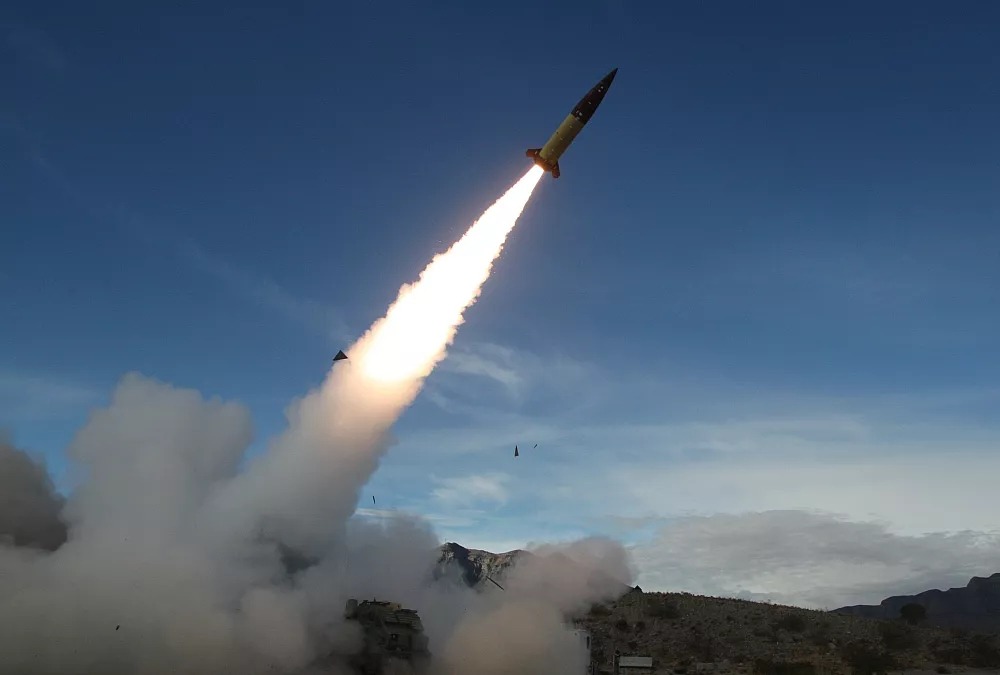Ukraine launches U.S. missiles into Russian territory for the first time

For the first time, Ukraine has deployed U.S.-supplied missiles against targets within Russia. On Tuesday, Ukraine launched long-range missiles supplied by the United States into Russian territory for the first time, following President Biden’s recent authorization for their deployment, notwithstanding Russian warnings of potential retaliation. A Ukrainian official reported that the Army Tactical Missile System, referred to as ATACMS, was deployed to target an ammunition storage facility located in Russia’s Bryansk region.
On Tuesday, the Ukrainian Armed Forces reported a successful strike on an arsenal located near the town of Karachev at 2:30 a.m. local time, which resulted in 12 secondary explosions and detonations. The official verified that the operation was executed utilizing ATACMS.
The Biden administration had consistently refrained from permitting Ukraine to deploy ATACMS against Russia, citing apprehensions regarding potential escalation. ATACMS, a mobile launcher-based surface-to-surface missile system, boasts a striking range of 100 to 190 miles, contingent upon the specific model employed. The White House has sanctioned the deployment of missiles following the mobilization of thousands of North Korean troops to Russia’s Kursk region, an area where Moscow aims to dislodge Ukrainian forces that have taken control of territory.
In a significant development, Putin has sanctioned the expanded deployment of nuclear weapons on the milestone of the 1,000th day of the conflict in Ukraine. The newly articulated doctrine indicates that Russia may contemplate the use of nuclear weapons against a non-nuclear state, should that state receive backing from nuclear-armed nations.
On Tuesday, Russian President Vladimir Putin enacted a decree that expands the circumstances under which Moscow may deploy nuclear weapons, signaling a definitive warning to both the West and Ukraine. The action coincides with the 1,000th day of Russia’s military campaign in Ukraine and follows the United States’ authorization for Kyiv to deploy long-range missiles against military installations within Russian territory.
The newly articulated doctrine indicates that Russia may contemplate the use of nuclear weapons against a non-nuclear state, contingent upon the latter’s backing by nuclear-armed nations. “Aggression by a non-nuclear state, coupled with the involvement of a nuclear state, is classified as a coordinated assault,” stated Kremlin spokesman Dmitry Peskov to reporters on Tuesday, explicitly alluding to Ukraine and its Western allies.
“It was essential to align our principles with the prevailing circumstances,” Peskov remarked, describing the update as a “crucial” document that warrants “examination” internationally. According to him, Russia has consistently regarded nuclear weapons as a tool of deterrence, asserting that their use would be contingent upon a sense of being “forced” to react.
Throughout the nearly three-year campaign against Ukraine, Putin has made a series of nuclear threats, raising alarm in the West over what it deems reckless rhetoric. The revised doctrine permits Moscow to execute a nuclear response in the case of a “massive” aerial assault, irrespective of whether conventional weapons are employed.
Upon the Kremlin’s initial announcement of the proposed changes in September, Peskov characterized it as a “warning” directed at anyone contemplating involvement “in an attack on our country by various means, not necessarily nuclear”.
The new doctrine will extend Moscow’s nuclear umbrella to its close ally Belarus. On the 1,000th day of the conflict, Peskov asserted that the “collective West” had instigated a “war” against Russia, vowing that Moscow would persist with what it terms its “special military operation” until completion.










